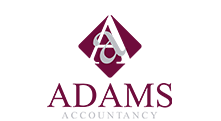The difference between the P&L and the Balance Sheet

Your business is all about your product or service, right? Hmm, not quite. It’s equally important to look after your customers and your business finances. That’s why there’s no getting away from building a good understanding of the financial health of your company by understanding the difference between the P&L and the balance sheet of your company.
Key differences between the Balance Sheet and Profit and Loss Account
It’s time to get to grips with the key differences between these two important financial statements:
Timing
The balance sheet shows your company’s financial position on a specific date, such as December 31, 2023. The profit and loss account shows the results of operations over time, such as the year ended December 31, 2023.
Content
The balance sheet is a statement of assets, liabilities, and equity. The balance sheet balances because Assets (what’s owned) = Liabilities (what’s owed) + Owner’s equity (what’s left over for the owners). The profit and loss account simply shows all the income and expenses for the period with the balance left over being retained profits.
Analysis
The balance sheet can be used to assess your business’ liquidity and solvency, compare your financial position to previous years, and identify trends over time. The profit and loss account tracks performance and profitability over time, and helps you identify areas where improvement is needed.
The relationship between Balance Sheets and Profit and Loss Accounts
The profit and loss account summarises a business’s trading transactions, such as income, sales, and expenditures, for a given period, and shows the resulting overall profit or loss. Any remaining profits which are not paid out as dividends to your shareholders or directors are shown as retained profit on the balance sheet. This means the profit and loss account must be prepared before the balance sheet can be finalised.
How do stakeholders use these financial statements?
Investors, lenders, senior management and others with an interest in the health of the business use these statements to assess the financial strength of the company. There are a few useful financial ratios which are derived from balance sheet or profit and loss figures.
Balance sheet key metrics
Current ratio
Current ratio = current assets/current liabilities. This tells you if you have enough short-term cash to pay you current bills.
Working capital
Working capital = current assets – current liabilities. The working capital is a measure of how effectively you are using your company resources. It shows your company’s liquidity and short-term financial health. A very high working capital figure could suggest that you aren’t making the most of your cash reserves to take advantage of business opportunities.
Debt-to-equity ratio
Debt-to-equity (D/E) ratio = Total liabilities/total shareholder equity. This is the ratio of what is owed to what is owned. A lower D/E ratio is usually favoured.
You can also get key performance metrics from the P&L account
Gross profit
Gross profit = Turnover – cost of goods sold. This shows you how efficiently you use labour and materials to create your products and services.
Net profit
Net profit = Gross profit – overheads. Net profit is the true indicator of a company’s overall profitability as it takes into account all the expenses incurred in doing business.
Net profit margin
Net profit margin = Net profit/Gross profit. Net profit margin helps you determine if the company is generating enough profit from its sales. It also shows if overhead costs are well controlled.
Need help to understand the difference between the P&L and Balance Sheet in more detail?
Adams Accountancy is not just about tax returns and compliance. We can help you gain a deeper understanding of what’s driving the results in your business. To chat to us about your financial statements, call 01322 250001 for a no-obligation, free discussion.

